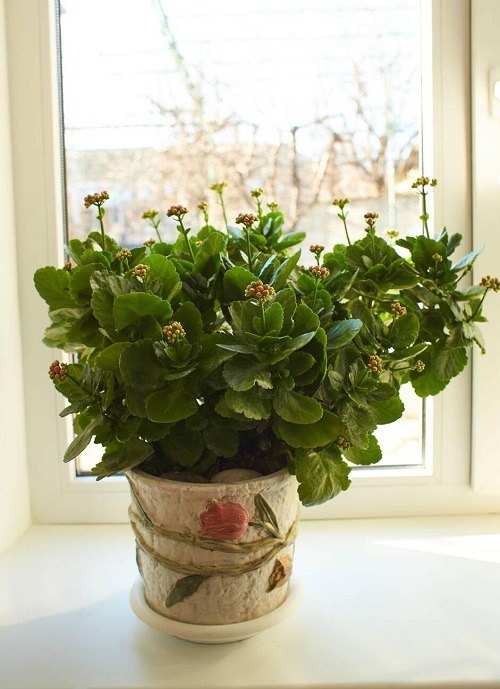Kalanchoe plants, renowned for their captivating foliage and exquisite blooms, are a favorite among succulent enthusiasts. However, even the hardiest of succulents can encounter challenges, one of which is the alarming phenomenon of leaf desiccation. When Kalanchoe leaves start to dry out, it triggers a sense of urgency among caretakers, leaving them to ponder the underlying causes of this distressing condition.
The Science of Succulent Stresses
Understanding the physiological intricacies of Kalanchoe is essential to diagnosing leaf dehydration. These plants are adapted to survive arid environments, showcasing an evolutionary prowess that allows them to store water in their thick, fleshy leaves. This characteristic makes them particularly susceptible to stressors that can disrupt their precious hydration levels. Factors such as inadequate watering, overly stringent light conditions, and pest infestations can all culminate in a cascade of symptoms, with drying leaves often being the most conspicuous.
The Temperature Tango: Temperature’s Role in Leaf Health
Temperature extremes are adversaries to Kalanchoe vitality. Ideally, this succulent flourishes in environments ranging from 60°F to 80°F (15°C to 27°C). Exposing the plant to scorching heat or frigid drafts can propel it into a state of distress, instigating the drying of leaves as a survival mechanism. Excessive heat can encourage rapid evaporation, stripping the plant of its moisture reserves. Conversely, cold conditions can hinder the plant’s metabolic functions, preventing adequate nutrient and water uptake.
To mitigate temperature-related issues, it is prudent to position your Kalanchoe in a stable environment. Avoid placing it next to heating vents or air conditioning units. Instead, opt for a location with indirect sunlight and consistent temperatures, safeguarding your plant from rapid fluctuations that could jeopardize its health.
Watering Woes: The Fine Line Between Thirst and Drowning
One of the most common culprits behind drying Kalanchoe leaves is improper watering practices. The succulent’s affinity for dry conditions necessitates a careful approach to hydration. Overwatering, often a well-meaning mistake, can lead to root rot—a condition that hampers the plant’s ability to absorb water effectively. The initial signs are typically yellowing leaves; however, if not addressed, these leaves may eventually dry out and fall off entirely.
On the other hand, underwatering can be equally detrimental. When the soil becomes bone dry, Kalanchoe may respond by shedding its leaves in a desperate attempt to conserve moisture. To find the right balance, it is crucial to adopt a watering schedule that takes into account the environmental conditions. During the growing season, water your Kalanchoe when the top inch of soil feels dry to the touch. In contrast, during the dormant winter months, reduce watering frequency, allowing the plant to rest without the risk of root issues.
Light Levels: Striking the Perfect Balance
Light is a vital element in the photosynthetic process, and Kalanchoe requires an optimal balance to thrive. Insufficient light can weaken the plant and lead to symptoms like elongated stems and dry leaves. Too much direct sunlight, especially in warm climates, can scorch the succulent and result in desiccation. The ideal situation for your Kalanchoe is to receive bright, indirect light for several hours a day. A south-facing window or a spot where it can bask in filtered sunlight is often perfect. If necessary, rotate your plant regularly to ensure even exposure, preventing one side from becoming overly stressed.
Pest Predicaments: Unseen Interlopers
Another aspect that can lead to leaf drying is the presence of pests. Spider mites, mealybugs, and aphids tend to target succulents, sapping their vitality and exacerbating dehydration. While these pests are often small and elusive, their damage can be significant. Look for telltale signs such as webbing, small specks, or a sticky residue on the leaves. If detected, it is paramount to act swiftly to curb their proliferation.
Insecticidal soap or neem oil can be effective remedies, providing a means to remove these unwelcome guests while safeguarding your Kalanchoe. Regularly inspecting your plant and maintaining cleanliness in its environment can prevent infestations before they take root.
Adjustment and Revitalization: Rescuing Your Kalanchoe’s Health
Should your Kalanchoe exhibit signs of distress—specifically, drying leaves—the first step in revitalization is to assess environmental conditions and make necessary adjustments. Examine the watering routine, light exposure, and temperature stability to create an optimal living space for your succulent. Addressing these factors holistically allows for greater resilience against future leaf dehydration.
Additionally, consider repotting your Kalanchoe if root rot is suspected. Gently remove it from its pot, inspect for healthy and unhealthy roots, and trim away any that appear to be compromised. Replant in fresh, well-draining soil crafted for succulent needs, facilitating better aeration and moisture control. This empowerment of the root system can have a profound impact on leaf vitality.
Ultimately, while the plight of drying leaves brings concern, it also presents an opportunity for growth and learning. By honing your care techniques and being attuned to your Kalanchoe’s specific needs, you can foster a thriving and beautiful plant, one that will grace your space with its stunning presence for years to come.





Leave a Comment